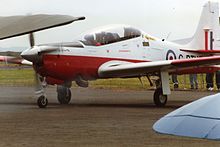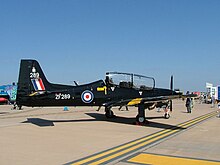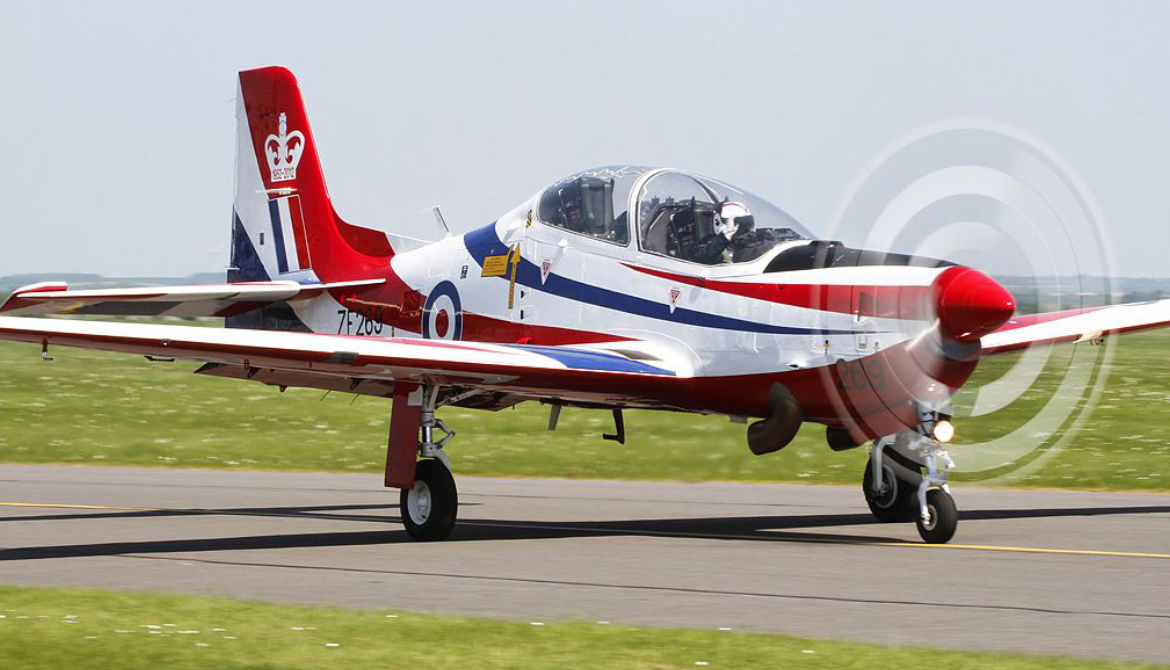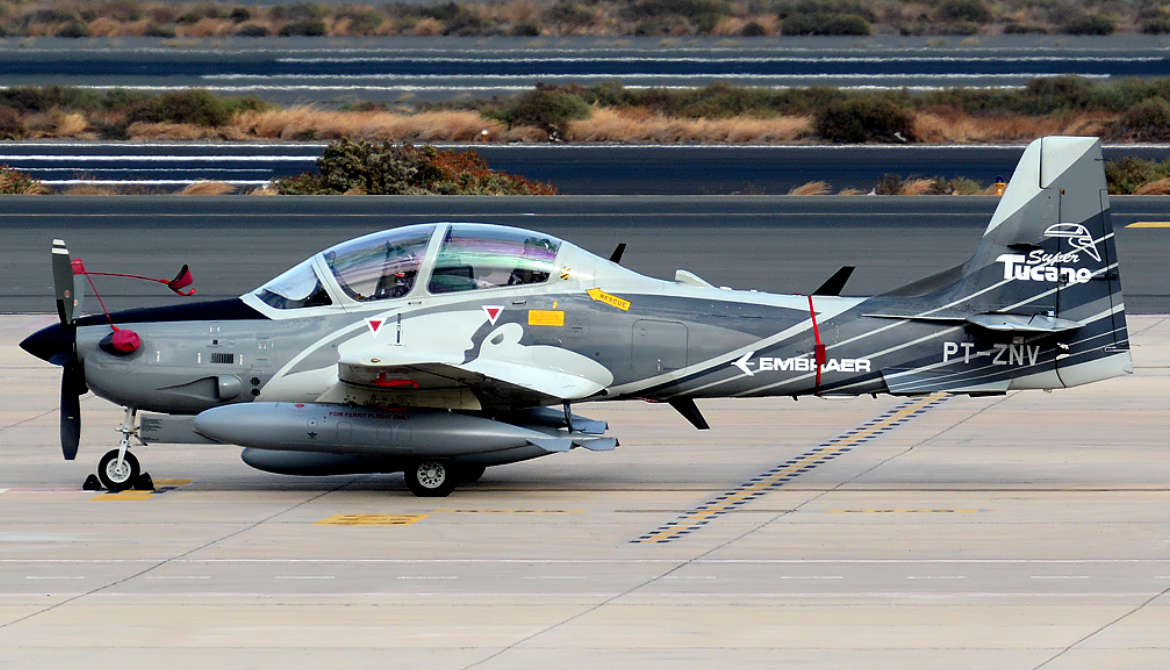Short Brothers plc, Short T.1 Tucano
|
|||||||||||||||||||||||||||||
.
History Short Brothers plc,
Short Tucano is a two-seat turboprop basic trainer
Manufactured 1986–1995

The Short Tucano is a two-seat turboprop basic trainer built by Short Brothers in Belfast, Northern Ireland. It is a licence-built version of the Brazilian Embraer EMB 312 Tucano.
On 14 February 1986, the prototype conducted its maiden flight in Brazil before being delivered to Shorts to be used as a pattern aircraft and modified to meet Royal Air Force (RAF) requirements and used for trials and demonstrations. The first Short-assembled aircraft flew on 30 December 1986; deliveries to the RAF commenced during June 1988. The final example of the type was completed in 1995. Maintenance and support of the RAF's Tucano fleet was typically outsourced to several private companies.
Design and development

Development of the Short Tucano commenced in May 1984, following an agreement between Brazilian aircraft manufacturer Embraer and Northern Ireland aviation firm Short Brothers to collaborate on a response to an outstanding British requirement, which sought a replacement for the aging BAC Jet Provost basic trainer for the Royal Air Force (RAF). For this purpose, the RAF had issued Air Staff Target 412, defining the performance criteria it desired for a new high-performance turboprop-powered basic trainer. A short list was compiled of various aircraft that had been submitted in response; other than the Tucano, the types considered were the Swiss Pilatus PC-9, the British NDN-1T Turbo-Firecracker and the Australian Aircraft Consortium's (AAC) A.20 Wamira II

Variants
- Tucano T1
- Two-seat basic trainer for the RAF – 130 delivered (one other aircraft (T42) was severely damaged by an IRA bomb blast whilst in final assembly in 1990 and was subsequently sold privately to the USA in 2013 by Shorts
- Tucano Mk.51
- Export version for Kenya – 12 delivered (13 were flown as the first was lost - see above).
- Tucano Mk.52
- Export version for Kuwait – 16 delivered.
0
KmCeiling
0
KmCombat RANGE
0
Km/hAircraft Speed
0
Max Crew
Photo Gallery
Short Brothers plc, Short Tucano is a two-seat turboprop basic trainer
Manufactured 1986–1995


Short Brothers plc, Short Tucano is a two-seat turboprop basic trainer Manufactured 1986–1995
General characteristics
- Crew: 2
- Length: 9.86 m (32 ft 4 in)
- Wingspan: 11.28 m (37 ft 0 in)
- Height: 3.40 m (11 ft 2 in)
- Wing area: 19.40 m2 (208.8 sq ft)
Powerplant
- Empty weight: 2,017 kg (4,447 lb)
- Max takeoff weight: 3,275 kg
- Fuel capacity: 724 L
- Powerplant: 1 × Garrett TPE331-12B turboprop, 858 kW (1,151 shp)
- Propellers: 4-bladed Hartzell constant speed, fully feathering, aluminium, reversible-pitch propeller, 2.39 m (7 ft 10 in) diameter
Specifications
- Maximum speed: 507 km/h (315 mph, 274 kn) at 3,000–4,600 m (10,000–15,000 ft)
- Cruise speed: 407 km/h (253 mph, 220 kn) at 6,100 m (20,000 ft) (econ. cruise)
- Stall speed: 80 km/h (50 mph, 43 kn) (flaps and gear down) (EAS)
- Never exceed speed: 518 km/h (322 mph, 280 kn) (EAS)
- Range: 1,665 km (1,035 mi, 899 nmi)
- Endurance: 5 h 12 min
- Service ceiling: 10,000 m (34,000 ft)
- g limits: +7/-3.6
Armament
- Provision for 1,000 lb (454 kg) of stores on four underwing hardpoints, but not on RAF Tucanos
.
Links to Youtube & Others
At the war's end BOAC obtained more Mark IIIs and gradually came up with better accommodation for its passengers, in three configurations. Bench seats were removed, and civil-standard seating installed.
Short Brothers plc,
Short T.1 Tucano
Sunderland T9044 was discovered on the seabed off Pembroke Dock in Wales in 2000.[51] The site is protected and recovery of the aircraft is ongoing
Youtube Link
The 990 did not meet the specifications promised, and American Airlines reduced its order as a result.














